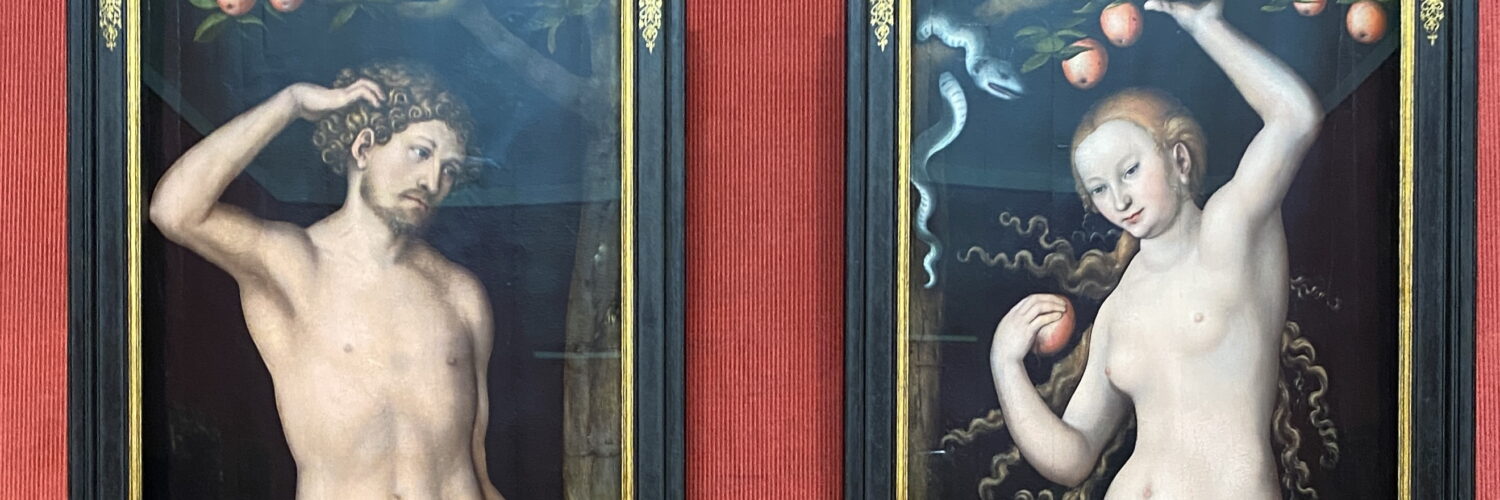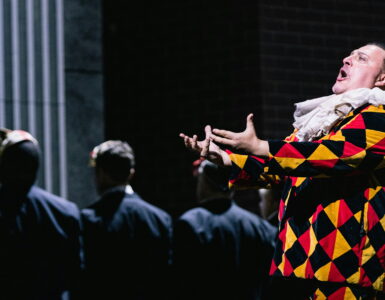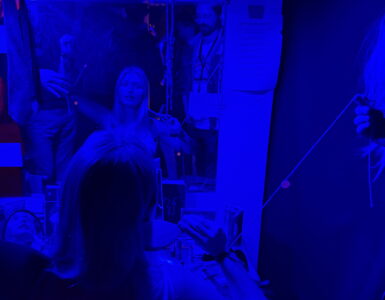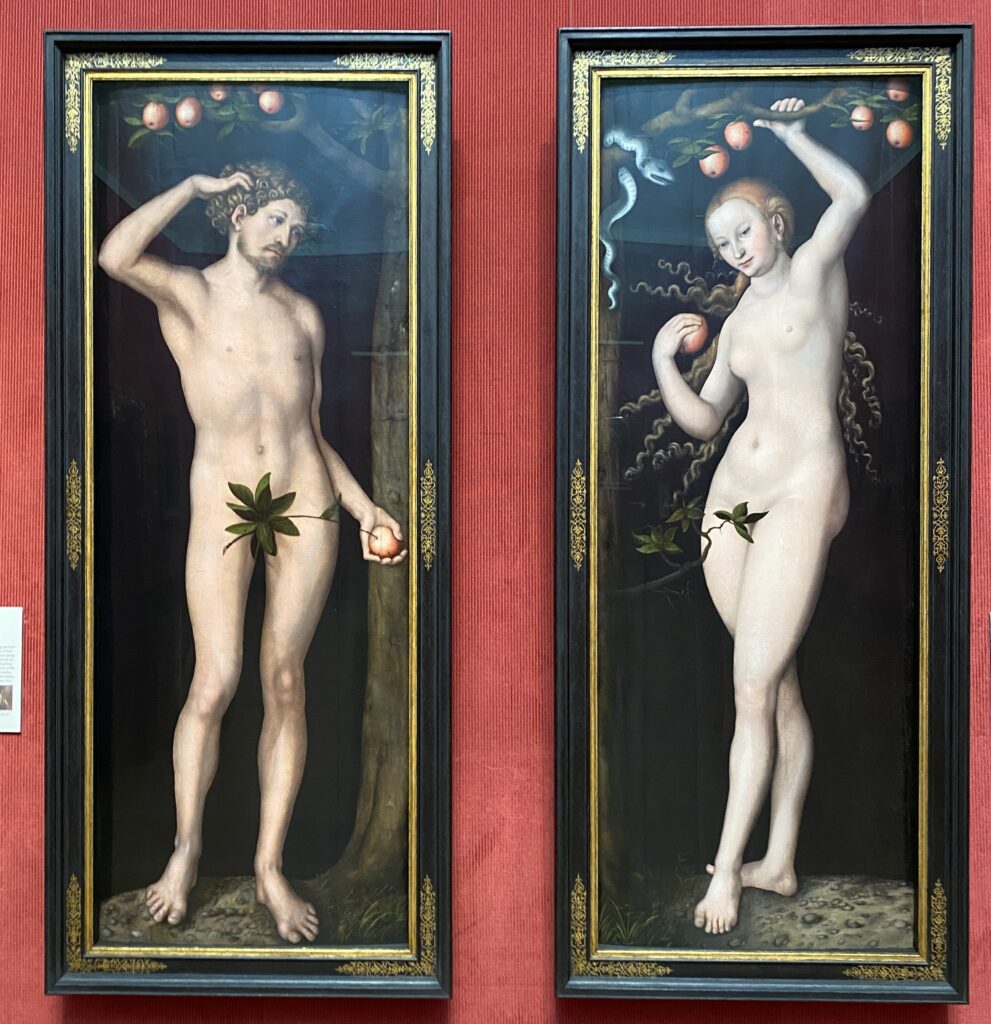
German Renaissance painter and printmaker in woodcut and engraving, Lucas Cranach the Elder painted some of the most seductive images of the early 16th century. Of note are two nearly life-size 16th-century wood panel paintings Adam and Eve that the leading German Renaissance painter completed nearly 500 years ago, interpreting these significant biblical subjects with humorous insight and flair. His striking portrayals of Adam and Eve beneath the Tree of Knowledge are among the highlights of the Norton Simon Museum of Art in Pasadena, California.
Following a multi-year conservation treatment and technical study, these captivating life-size paintings are being presented for the first time at Getty. The current exhibition now at the Getty Museum will close on April 21, 2024.
This recent conservation project was undertaken to clean and study his Adam and Eve paintings. The ambitious and painstaking restoration, which took over two-and-a-half years, provided scholars and experts with a rare opportunity to investigate how Cranach produced such large panel paintings and the technique behind his sinuous painting style.
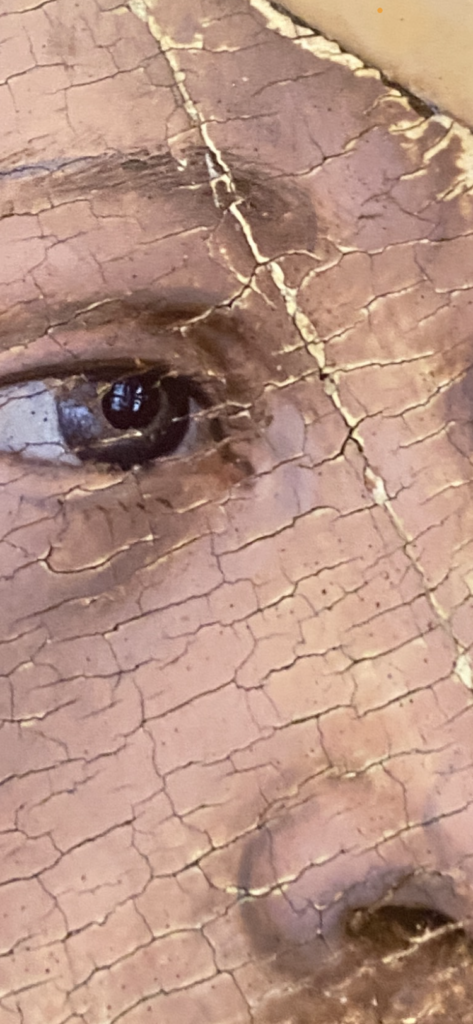
Known for his sly wit, Cranach’s art hold many delights. If you look carefully, you can see the reflection of a window in Adam’s eye.
Lucas Cranach the Elder is a pivotal figure in art history, renowned for his role as a leading painter in Saxony and one of the most influential artists of the 16th-century German Renaissance. His work spans a vast array of subjects, including altarpieces, court portraits, and notably, portrayals of the Protestant Reformers. Cranach’s artistry is characterized by its combination of religious themes with a distinctive style, often featuring elongated female nudes and fashionably dressed ladies drawn from biblical or mythological contexts.
His paintings of Adam and Eve beneath the Tree of Knowledge are particularly significant. Firstly, they reflect Cranach’s deep engagement with religious subjects, initially within the Catholic tradition and later as a means of conveying Lutheran religious concerns during the Reformation. These works are not only artistically accomplished but also serve as visual theology, communicating the ideas of the Protestant Reformation, to which Cranach was closely connected through his friendship with Martin Luther.
Additionally, Cranach’s depictions of Adam and Eve are celebrated for their intricate composition and the use of symbolism. Each element within the paintings, including the various animals and the portrayal of the figures themselves, carries symbolic meaning. For instance, the animals in the paintings are not merely decorative but represent different aspects of Christian symbolism, such as the deer and stag symbolizing the defenseless and resurrected Christ.
Cranach’s Adam and Eve paintings are also noted for their technical precision and the way they capture the human form, reflecting the anatomical studies of the time. They are considered some of the first full-size nudes by a German artist, following the tradition of Albrecht Dürer’s studies. These works have had a lasting impact on the visual arts and continue to be studied for their artistic and historical significance.
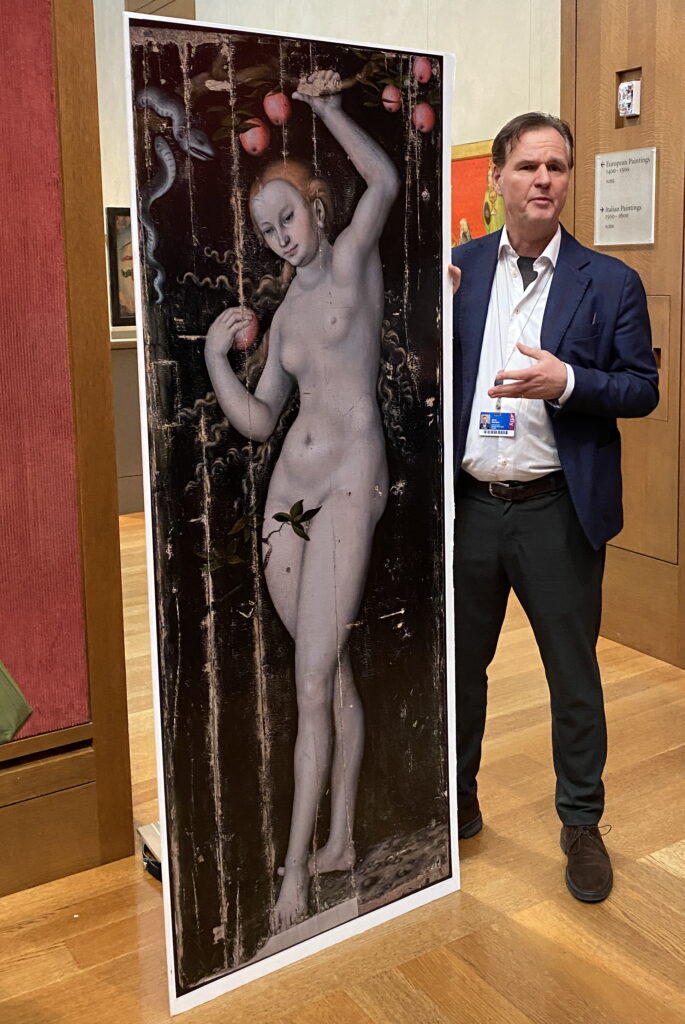
Conserving Eden
January 23–April 21, 2024
The Getty Center
Make free advance reservations for the Getty Center.
Getty is a leading global arts organization committed to the exhibition, conservation, and understanding of the world’s artistic and cultural heritage. Working collaboratively with partners around the globe, the Getty Foundation, Getty Conservation Institute, Getty Museum and Getty Research Institute are all dedicated to the greater understanding of the relationships between the world’s many cultures. The Los Angeles-based J. Paul Getty Trust and Getty programs share art, knowledge, and resources online at Getty.edu and welcome the public for free at the Getty Center and the Getty Villa.
The J. Paul Getty Museum collects Greek and Roman antiquities, European paintings, drawings, manuscripts, sculpture and decorative arts to 1900, as well as photographs from around the world to the present day. The Museum’s mission is to display and interpret its collections, and present important loan exhibitions and publications for the enjoyment and education of visitors locally and internationally. This is supported by an active program of research, conservation, and public programs that seek to deepen our knowledge of and connection to works of art.
Visiting the Getty Center:
The Getty Center is open to a limited number of visitors, in accord with state and local public health guidelines, Tuesday through Sunday, 10 a.m. to 5 p.m. It is closed Mondays, Thanksgiving, December 25 (Christmas Day), and January 1.
Admission to the Getty Center is always free, but in order to allow social distancing, a reservation is currently required for admission. Reservation are available at www.getty.edu/visit or at (310) 440-7300. Parking is $20. The Getty Center is at 1200 Getty Center Drive, Los Angeles, California.
Additional information is available at www.getty.edu. Sign up for e-Getty at www.getty.edu/subscribe to receive free monthly highlights of events at the Getty Center and the Getty Villa via e-mail, or visit www.getty.edu for a complete calendar of public programs.


